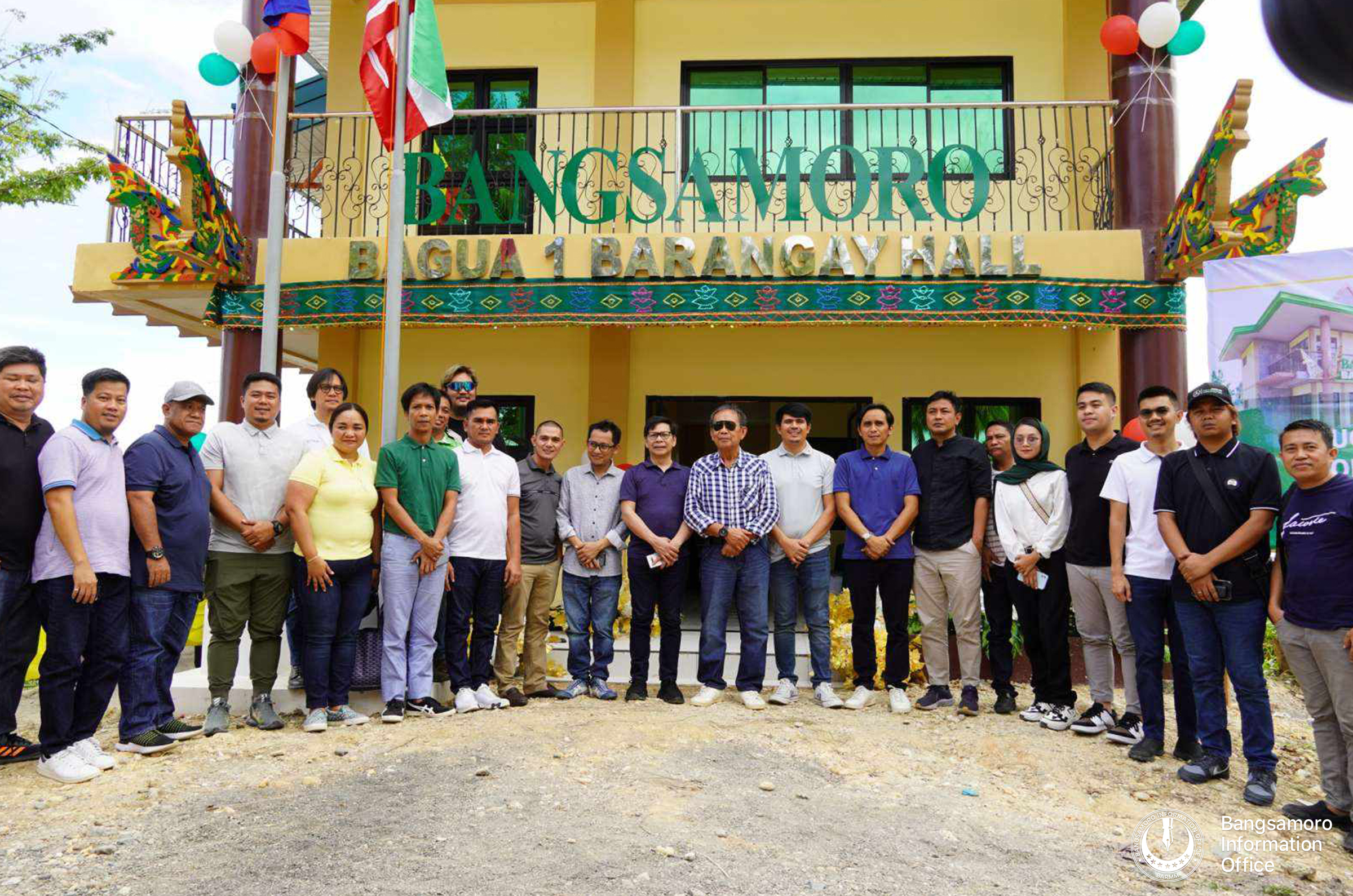
Lawyer Naguib Sinarimbo from the Ministry of Interior and Local Government (MILG) leads the turnover ceremony for the newly built two-storey Barangay Hall in Bagua 1, Cotabato City, on Tuesday, Nov. 21, 2023. (Photo by Michael Camsa)
COTABATO CITY—Ministry of Interior and Local Government (MILG) inaugurated on Nov. 21, the newly constructed two-storey Barangay Hall in Bagua 1 (Lugay-Lugay) as part of the Government of the Day’s commitment to enhance service delivery in this city.
This initiative, worth Php3.5 million, represents a priority program aimed at providing essential services to the community and becoming the primary center of interaction between the people and local government unit.
Led by MILG Minister Atty. Naguib Sinarimbo, along with MILG-Cotabato City Field Office Director Muhammad Farzieh Abutazil and other Bangsamoro officials, the ceremony emphasized the MILG’s dedication to supporting local communities.
Sinarimbo underscored the goal of strengthening governance at the barangay level and encouraging constituents to maximize the benefits of the new building.
“Beyond the capacity program, the Government of the Day has intensively implemented various road and infrastructure projects, particularly to promote the economic and tourism status of the region,” he said.
“We want our barangay to develop and promote tourism activities that will provide more employment opportunities,” he added.
Chairman Mohammad Modifh Midtimbang of Bagua-Uno expressed his gratitude during the turnover ceremony, recognizing the honor of receiving the new barangay hall.
He pledged to prioritize the needs of the community, aligning with the regional government’s objectives and stressed the importance of maintaining the facilities for future generations.
“In taking up this position, I am committed to building upon the foundation laid before me,” Midtimbang affirmed.
This significant event represents the strong collaboration between the regional and Cotabato city governments, fostering trust and commitment while promoting accountable community leadership.
Aligned with BARMM Chief Minister Ahod Ebrahim’s Enhanced 12-Point Priority Agenda, this infrastructure project supports the development of reliable infrastructure to drive economic growth within the Bangsamoro region. (Johaira Sahidala/BIO)







